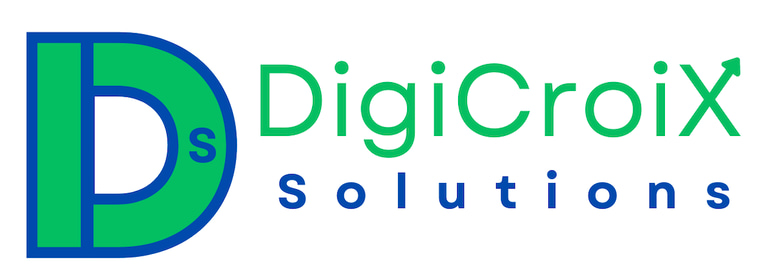Mastering Patient Journey Mapping: A Step-by-Step Guide for Healthcare Providers
If you’re not using patient journey mapping, you’re losing patients at every touchpoint. Learn how to optimize the patient experience to boost retention and referrals.
BUSINESS NEEDSCOMPREHENSIVE GUIDEPROFESSIONAL SERVICES
Vishwa Raval
3/6/20255 min read


Understanding Patient Journey Mapping
Patient journey mapping is a systematic approach that healthcare providers utilize to comprehend and visualize the experiences patients go through as they seek care. This process involves mapping out each interaction, or touchpoint, between patients and healthcare services—from initial awareness of a health issue to post-treatment follow-ups. By examining these touchpoints, providers can identify the various emotions and experiences patients encounter throughout their healthcare journey, which is crucial for delivering effective and empathetic care.
The importance of patient journey mapping in the healthcare industry cannot be overstated. It serves as a vital tool for healthcare organizations aiming to improve their services, enhance patient satisfaction, and increase retention rates. Through this mapping process, providers gain insights into patients' needs and expectations, allowing them to tailor their approach to ensure a more positive experience. This direct feedback subsequently informs care improvements that resonate with patients, fostering trust and loyalty in a competitive healthcare environment.
Key components of patient journey mapping include understanding the various stages of the patient experience, their emotional states at each contact point, and the challenges they face during their interactions with healthcare systems. For instance, patients may feel anxious when seeking diagnosis, confused about treatment options, or frustrated with appointment scheduling. Recognizing these emotions enables healthcare providers to address pain points proactively and enhance the overall experience.
Moreover, effective patient journey mapping can lead to improved patient referrals, as satisfied patients are more likely to recommend services they trust. By continuously revisiting and refining the journey map in response to patient feedback, healthcare providers can ensure they remain attuned to the evolving needs of their patient population. Ultimately, the mastery of patient journey mapping equips providers with the essential tools needed to deliver high-quality care that meets and exceeds patient expectations.
Steps to Create an Effective Patient Journey Map
Creating an effective patient journey map is a structured process that involves several critical steps. The first step is to identify the target patient population. Understanding who the patients are based on demographics, conditions, and other relevant factors is essential. This step allows healthcare providers to tailor the journey map to the specific needs of the individuals they serve. Gathering relevant data through various methods such as surveys, interviews, and focus groups is the next step. Engaging patients directly can provide invaluable insights into their experiences and expectations, shedding light on both positive touchpoints and pain points within the healthcare system.
Once sufficient data has been collected, the next step involves mapping out the patient journey touchpoints. This includes outlining all stages a patient goes through, starting from awareness and continuing through to post-treatment follow-up. Each interaction a patient has with the healthcare system, whether it be a website visit, appointment scheduling, or communication with healthcare professionals, should be documented in detail. This approach helps create a holistic view of the patient experience and allows for identifying critical moments that impact patient satisfaction.
After mapping out these touchpoints, it is essential to analyze the collected data. Look for trends that highlight areas requiring improvement, such as service delays or communication gaps. Utilizing patient feedback effectively can guide healthcare providers in making informed decisions to enhance overall patient experience. It is crucial to involve a multidisciplinary team in the analysis process to ensure diverse perspectives are considered, leading to more comprehensive insights. By following these steps diligently, healthcare providers can create a patient journey map that not only improves patient engagement but also enhances the quality of care delivered.
Optimizing the Patient Experience at Each Touchpoint
Enhancing the patient experience at critical touchpoints is vital for healthcare providers aiming to deliver high-quality care and maintain patient satisfaction. A patient journey map identifies these touchpoints, revealing common pain points that can detrimentally affect a patient's overall experience. Addressing these challenges through targeted strategies can significantly improve both patient retention and referrals.
Common pain points across the patient journey often include lengthy wait times, difficulty accessing timely information, and insufficient communication from healthcare staff. To mitigate these issues, healthcare providers can implement various solutions. For instance, employing an online appointment scheduling system can streamline the process, reduce wait times, and create a more efficient visit. One notable example is a healthcare facility that adopted a centralized scheduling software, resulting in a 25% decrease in patient cancellations and no-shows.
Another critical aspect is the provision of clear and timely information. Patients frequently express frustration over a lack of communication regarding their treatment plans or delays. By ensuring that staff members are trained in effective communication and utilizing patient portals to share updates and educational resources, healthcare providers can cultivate a more informed patient base. A specific case study revealed that a hospital that increased its patient education initiatives saw a remarkable 30% improvement in patient satisfaction scores.
Additionally, personalization of care can significantly enhance the patient experience. Incorporating feedback mechanisms, such as surveys or focus groups, allows healthcare providers to fine-tune their services based on actual patient needs and preferences. For example, a clinic that adjusted its check-in process based on patient feedback created a more welcoming atmosphere, demonstrated a notable increase in positive online reviews.
Ultimately, the goal of optimizing the patient experience at each touchpoint is to foster a sense of trust and loyalty among patients. When healthcare providers actively address pain points and implement tailored solutions, they not only enhance the immediate experience but also establish lasting relationships that encourage patient retention and referrals.
Measuring Success and Continuously Improving the Journey
To cultivate a meaningful and effective patient journey, healthcare providers must prioritize the measurement of success metrics associated with their patient journey mapping efforts. Understanding these metrics enables organizations to evaluate the improvements made and refine their processes continuously. This involves not only assessing patient satisfaction but also analyzing key performance indicators (KPIs) that reflect the overall patient experience.
One of the foremost metrics to consider is patient satisfaction scores, often gathered through surveys designed to gauge overall satisfaction levels at various touchpoints throughout the patient journey. By implementing Net Promoter Scores (NPS) and Patient Satisfaction Surveys (PSS), providers can obtain direct feedback from patients about their experiences. Subsequently, tracking these scores over time allows healthcare facilities to assess improvements and recognize areas requiring further enhancement.
In addition to patient satisfaction, appointment wait times and access to needed services are essential KPIs that can influence the patient journey. Metrics such as average wait time from check-in to consultation not only help in streamlining operations but also enhance patient engagement. Furthermore, evaluating the rate of care coordination—measured by patient adherence to follow-up appointments or referrals—provides insight into the effectiveness of communication within the healthcare team.
Importantly, it’s crucial to establish feedback loops wherein patient experiences are consistently provided and utilized to inform ongoing improvements. This creates a dynamic system where past performance influences future strategies, ensuring that the patient journey is continually refined. Regularly re-assessing the patient journey mapping process will allow providers to maintain a competitive edge and uphold high standards of patient care, ultimately leading to enhanced health outcomes. Commitment to continuous improvement fosters not only patient loyalty but also enhances the reputation of healthcare organizations.
Get in Touch
Book your free consultation today and let's create a strategy to elevate your success!


Address
94 Shree Nagar Apartment, Sola Road, Naranpura, Ahmedabad, Gujarat, India 380063
6706 Fulton Avenue, Burnaby, BC, Canada V5E 3H1
Phone
+91 88497 12474
Quick Links
© 2025. All rights reserved.
Useful Links
Engagement
Subscribe
+91 88497 12474
